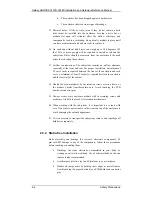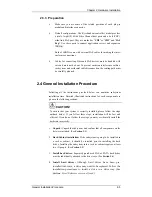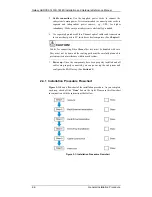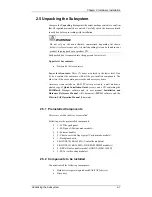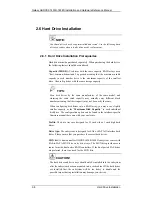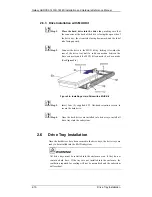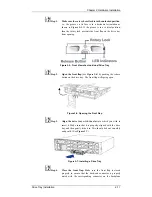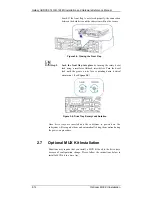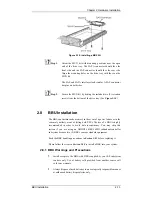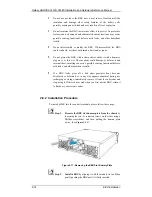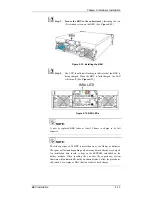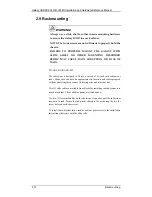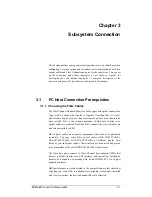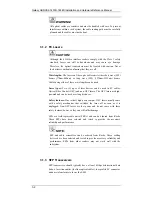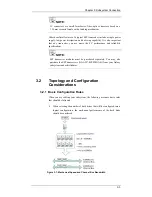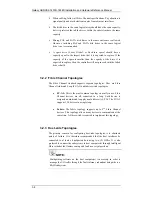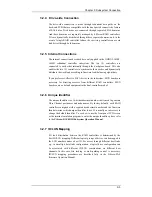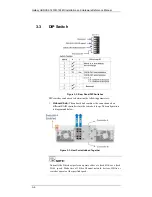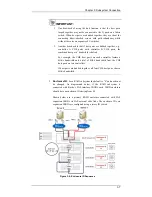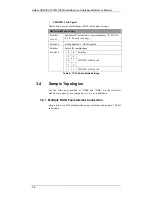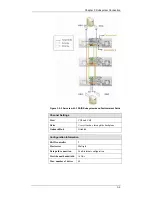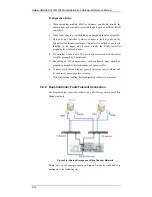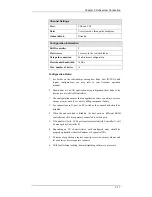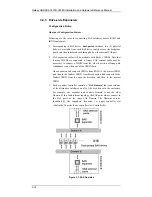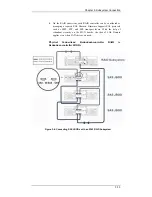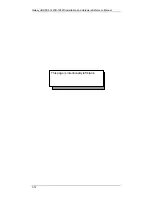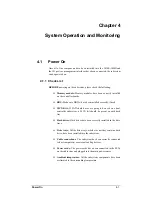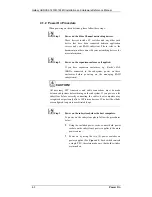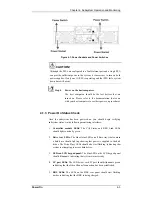
Galaxy GHDXS2-1430R-16F4D Installation and Hardware Reference Manual
3-2
WARNING!
All optical cables are sensitive and must be handled with care. To prevent
interference within a rack system, the cable routing path must be carefully
planned and the cables must not be bent.
3.1.2
FC
Lasers
CAUTION!
Although the 4G Fibre interface sockets comply with the Class 1 safety
standard, Lasers can still be hazardous and may cause eye damage.
Therefore, the optical transceivers must be treated with caution. Never
look at lasers without confirming that they are off.
Wavelengths:
The lasers on fiber optic cables emit either short wave (SW)
beams (770nm-860nm) or long wave (LW) (1270nm-1355nm) beams.
Cables using either of these wavelengths can be used.
Laser types:
Two (2) types of laser devices can be used in FC cables:
Optical Fibre Control (OFC) and non-OFC lasers. The OFC lasers are high-
powered and can be used over long distances.
Safety features:
Due to their high power output, OFC lasers usually come
with a safety mechanism that switches the laser off as soon as it is
unplugged. Non-OFC lasers are low power and do not come with these
safety features; however, they can still inflict damage.
SFPs are field-replaceable units (FRUs) and can be ordered from Rorke.
These SFPs have been selected and tested to provide the necessary
reliability and performance.
NOTE:
SFP and cable assemblies can be ordered from Rorke. These cabling
devices have been selected and tested to provide necessary reliability and
performance. SFPs from other vendors may not work well with the
subsystem.
3.1.3
SFP
Transceivers
SFP transceivers should typically have at least 4Gbps bi-directional data
links, a laser transmitter (for fiber optical cables), low-profile LC connector,
and a metal enclosure to lower the EMI.

